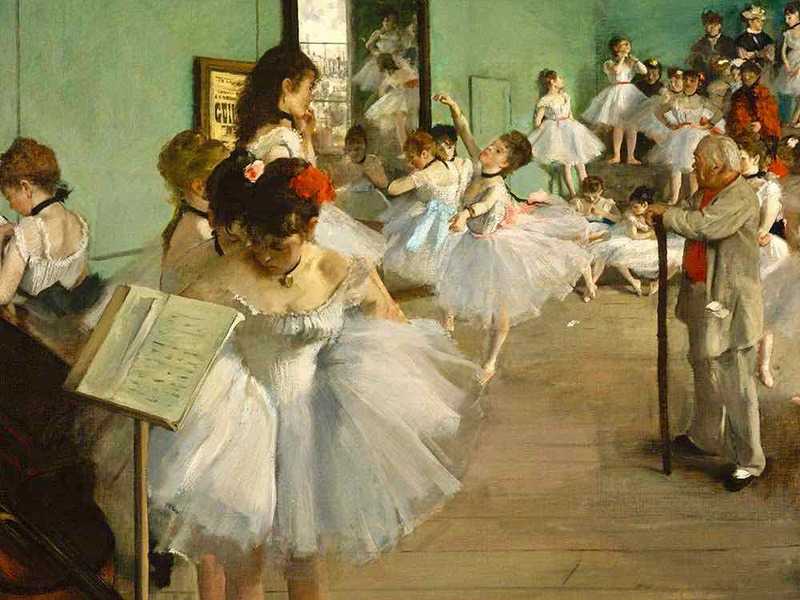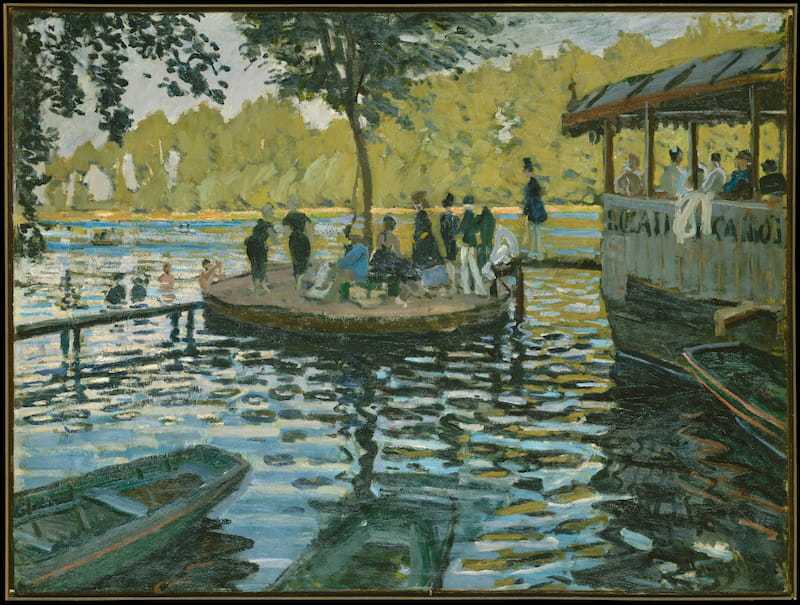1. Monet & Manet
Claude Monet
Claude Monet is one of the most iconic Impressionist painters, celebrated for his focus on capturing the nuances of light and colour in various natural settings.
The Metropolitan Museum houses several of his significant works, including the captivating "The Bridge at Argenteuil." This painting is from 1874, a fairly early stage in Monet's career. It is rendered with subtle brushstrokes, depicts a charming scene of a bridge over the Seine, enveloped in shimmering reflections. Monet's ability to capture the transient effects of light and the interplay of colors is on full display here.
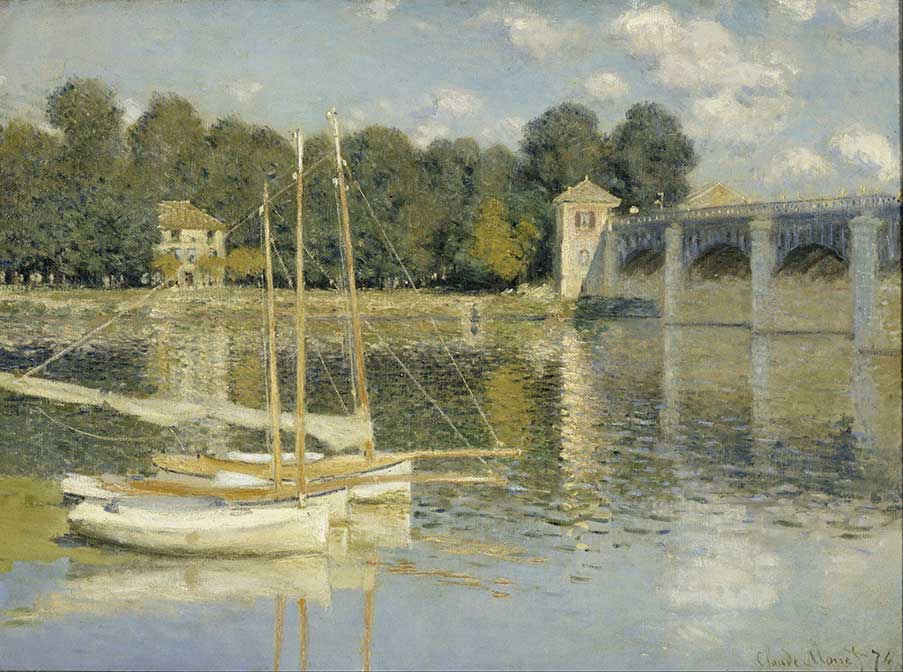
Another masterpiece by Monet in the collection is "The Artist's Garden at Giverny." This piece offers a glimpse into Monet's own garden, where he famously cultivated the subjects of his later works. The lush garden is portrayed in a mosaic of colours, conveying the artist's fascination with nature's ever-changing beauty.
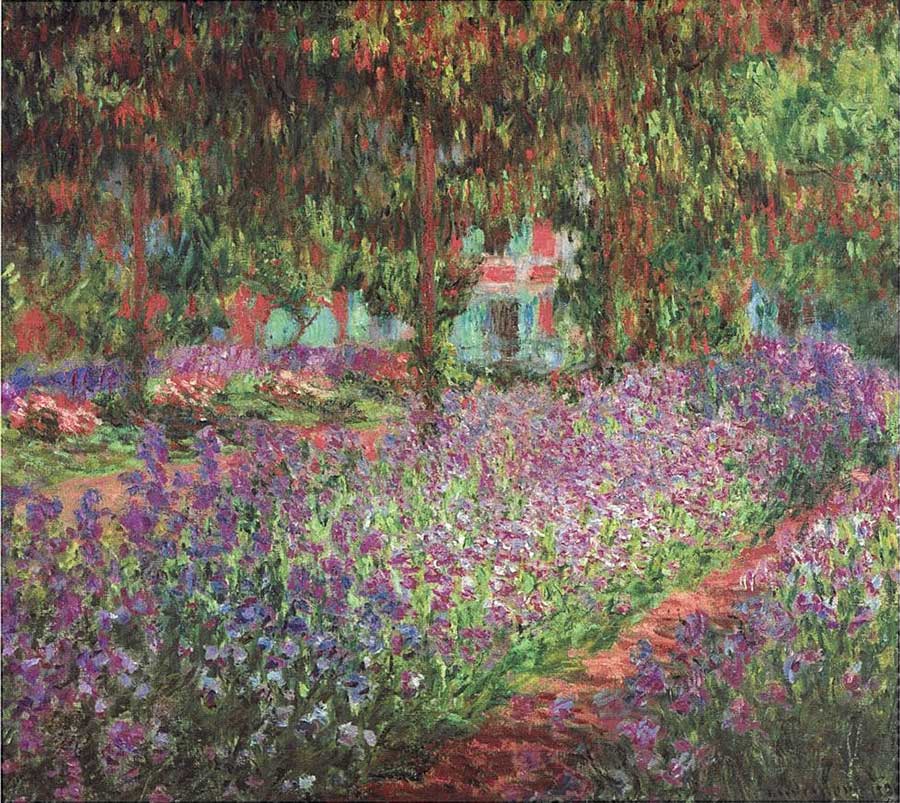
A third stand-out Monet is La Grenouillère (the Frogpond) from 1869 - so very early in Monet's career. The most interesting thing about this canvass is that it demonstrates how Monet and Renoir (who painted the same scene at the same time) developed their own versions of the impressionist style - their paintings are shown below:
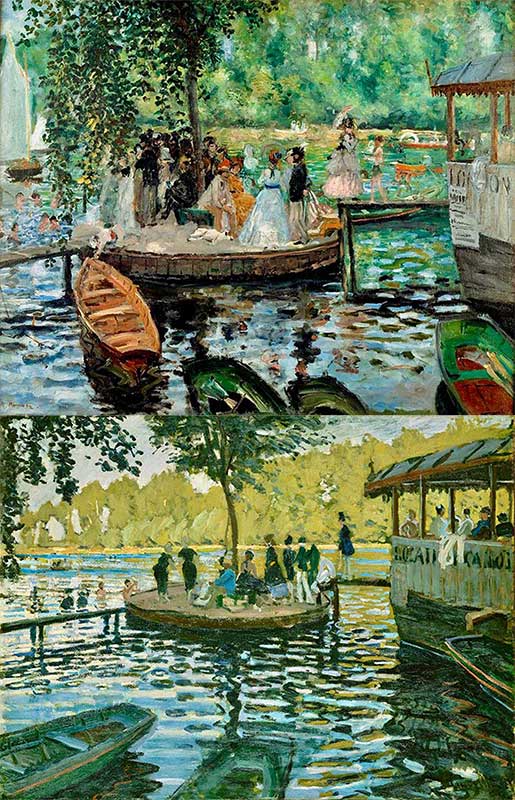
In addition, the Met has important versions from all of Monet's major series of paintings: the Water Lilies, Rouen Cathedral, Poplars, Venice, Haystacks (pictured below), and the Houses of Parliament.
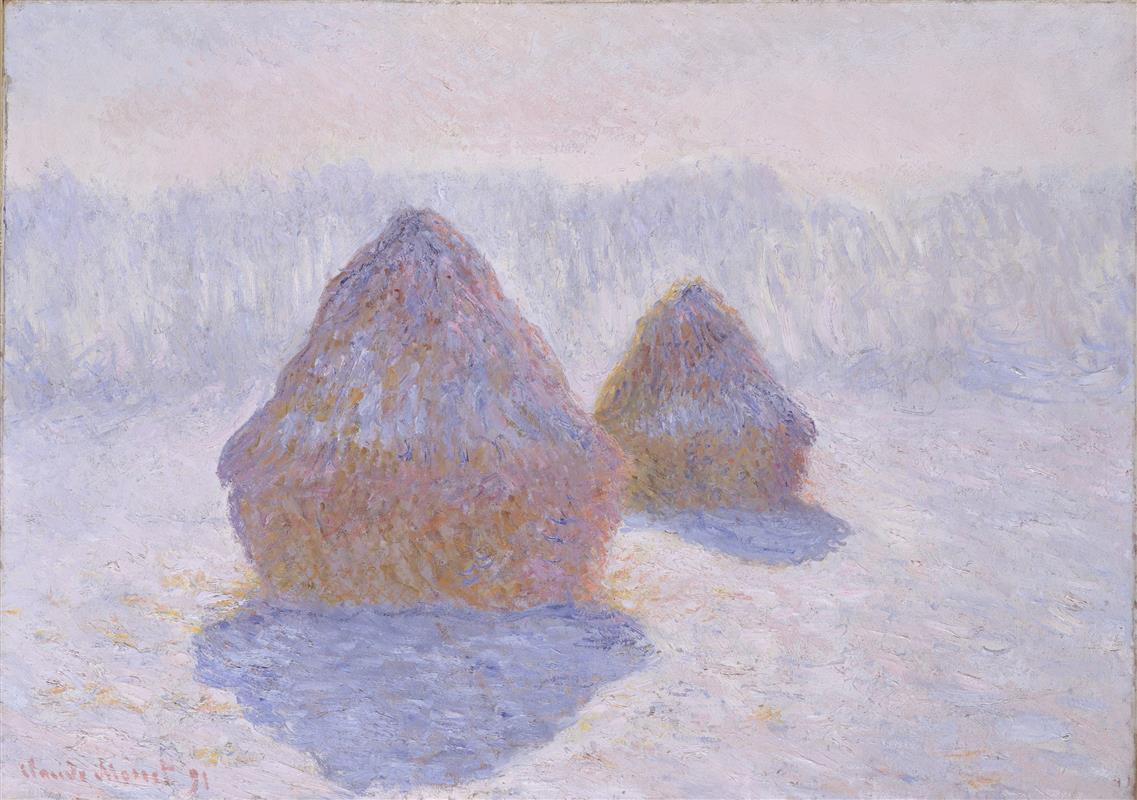
Edouard Manet
While not a traditional Impressionist, Edouard Manet's influence on the movement is undeniable. His innovative techniques and approach to subject matter laid the foundation for Impressionism.
One of Manet's most important early works, The Spanish Singer, is found within the Met's collection. Exhibited by Manet in the 1861 Salon (a critically important state exhibition for artists), this rater gormless looking singer earned Manet a medal and a certain amount of prestige.
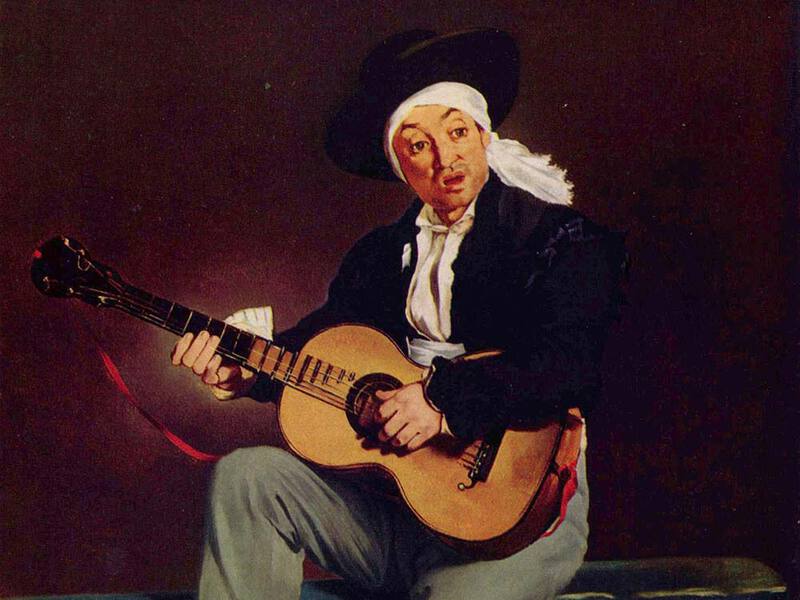
The Met also features his work "Boating," which captures a leisurely scene of a man and woman on a boat. Manet's loose brushwork and unique compositions mark this painting - completed in 1874, the same year as the First Impressionist Exhibition, as fully embracing to the Impressionist style. Compare the differences in style from The Spanish Singer.
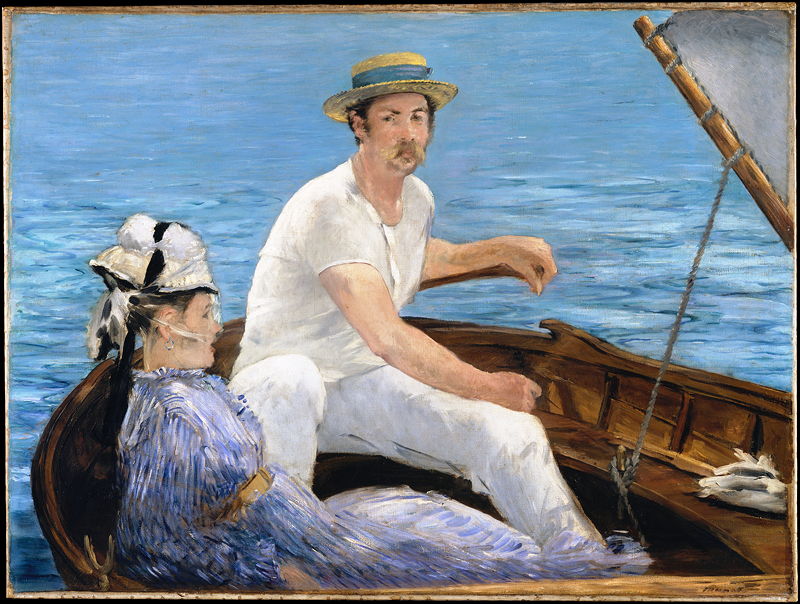
Another important Manet is his work entitled "The Monet Family in their Garden at Argenteuil". The signicnance here is not in the brushwork, though it is impressive enough. Rather, this is a reminder of the closeness of the impressionist circle - which was critical in allowing the impressionist group to withstand the hostility with which their new works were received.
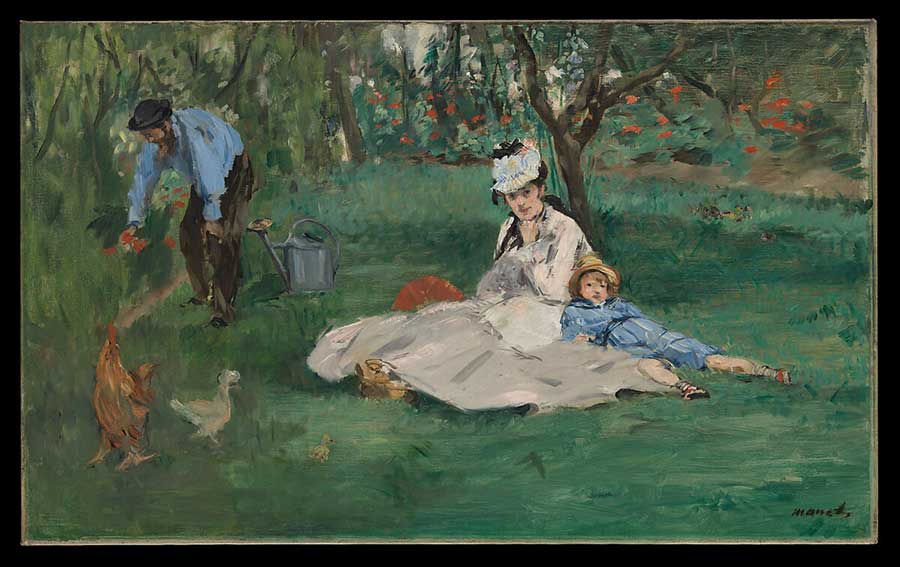
2. Renoir & Degas
Pierre-Auguste Renoir
Pierre-Auguste Renoir's paintings often exude a sense of joy and celebration of life. One of his renowned works at the museum is "At the Theater (La Première Sortie)." This painting depicts a young woman adorned in elegant attire, surrounded by the opulent interior of a theater. Renoir's deft brushwork captures both the details of the woman's dress and the vivacious atmosphere of the occasion.
Edgar Degas
Edgar Degas's contributions to the Impressionist movement extend beyond traditional landscapes. His fascination with capturing scenes of modern urban life sets his works apart. "Dancers in Blue" is a remarkable example, showcasing Degas's keen eye for movement and his ability to convey the grace of ballet dancers. The dancers' elegant poses and the subtle play of light on their dresses reflect Degas's meticulous observation.
3. Cezanne & Others
Paul Cézanne
Paul Cézanne's distinctive style bridges Impressionism and Post-Impressionism. The museum's collection features "The Card Players," a series of paintings in which Cézanne explores the interactions between individuals engrossed in a card game. His deliberate brushstrokes and geometric forms highlight his exploration of structure and composition.
Other Notable Artists
Among the other artists represented in the museum's Impressionist collection are Camille Pissarro and Mary Cassatt. Pissarro's "Hoarfrost" showcases his skill in depicting rural landscapes transformed by the elements. Mary Cassatt's "The Boating Party" captures a tender moment between a mother and child, emphasizing her unique perspective as a female Impressionist.
In conclusion, the Metropolitan Museum of Art's collection of Impressionist paintings offers a comprehensive overview of the movement's key figures and their contributions. From Monet's mastery of light to Manet's innovative techniques, Renoir's joyful scenes, Degas's exploration of modern life, Cézanne's bridge between styles, and other notable artists, the collection showcases the diversity and transformative nature of Impressionism. These works continue to captivate viewers with their vibrant colors, unique perspectives, and evocative representations of a changing world.



